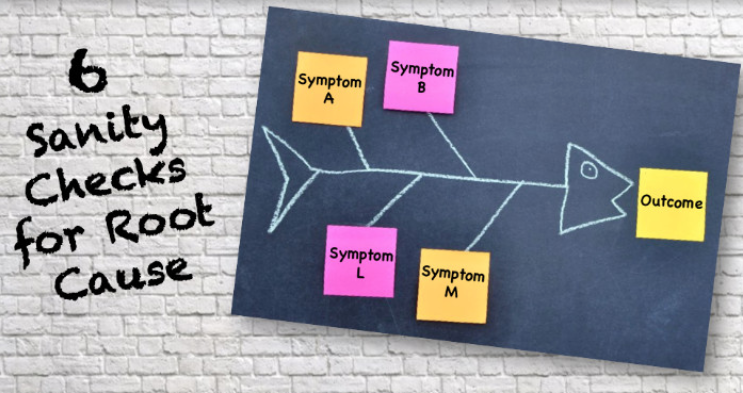6 Sanity Checks for Root Cause
Is getting to root cause "cramping" your style? You're not alone. Determining root causes to poor performing products or processes can be challenging at best. It's never easy.
In most cases it's not the tools that pull you down the proverbial rabbit hole, it's how to tell when you've arrived. I won't delve into the roadmap or process of root cause analysis in this post but I do want to share 6 sanity checks that I personally use to keep me honest and "real". So, let's get started, shall we?!
“ I’m going to need a little more for the root cause than, WHO’DA THUNK.”
Sanity Check #1
Clear Cause & Effect Relationship - This sanity check is probably your most important check for root cause. It should work like the gas pedal in your car. The farther you push down on the gas pedal, the faster your car will travel (outcome). Pull back the gas pedal and the car will slow down. In short, as you add or remove intensity to your root cause, you should see a practical and statistical difference in your process output or outcome.
Sanity Check #2
Current - Current means that your root cause(s) are a result of current business behaviors and/or trends. As a baseline, I like to use at minimum "one season" or twelve months of activity as a boundary of business conditions. In other words, your business model has not changed during this period. To confirm, map the process in a fashion that confirms your hypothesis.
Sanity Check #3
Actionable - You or your team can do something about a chosen root cause today. Do you have the resources or approval to change or address the root cause? Has your organization given you authority or a metaphorical power of attorney to address the cause. Actionable also relates to "Current" above. If the cause happened in the past or during a legacy process or behavior not currently in practice, then it is not an actionable root cause. You can't fix something that doesn't exist.
Sanity Check #4
Meaningful - There may be a clear cause and effect relationship between a behavior and an outcome but if it doesn't create meaningful business results, leave if for now. In Lean Six Sigma "vernacular", just because you have a low "P" value doesn't mean it's meaningful to the process customer or project outcome. If this root cause doesn't move the needle between the baseline and target performance level, leave it for now.
Sanity Check #5
Physical - If you can't see it, touch it, smell it or measure it, it's not a root cause. A root cause should be a business behavior or lack of. This concept can take many forms but make sure it's not hypothetical or theoretical. If it's not physical, you're not likely able to do anything about it. Leave those issues to organizational psychologists.
Sanity Check #6
Systemic / Repeatable - It's not going away until you do something about it. Quick wins or Band-Aids may hide the problem temporarily but remember, problems that go away by themselves will come back by themselves.
Keep these checks handy when facilitating a root cause analysis session. Write the title of each "sanity check" on a flip chart to keep your team aligned. Each of these must be met to journey from potential root cause to "root cause".
If you enjoyed this article, click the like button and share with your network. If you would more information about this topic or related initiatives contact us at succeed@cikata.com. Don’t forget to click on our social links for the latest.



